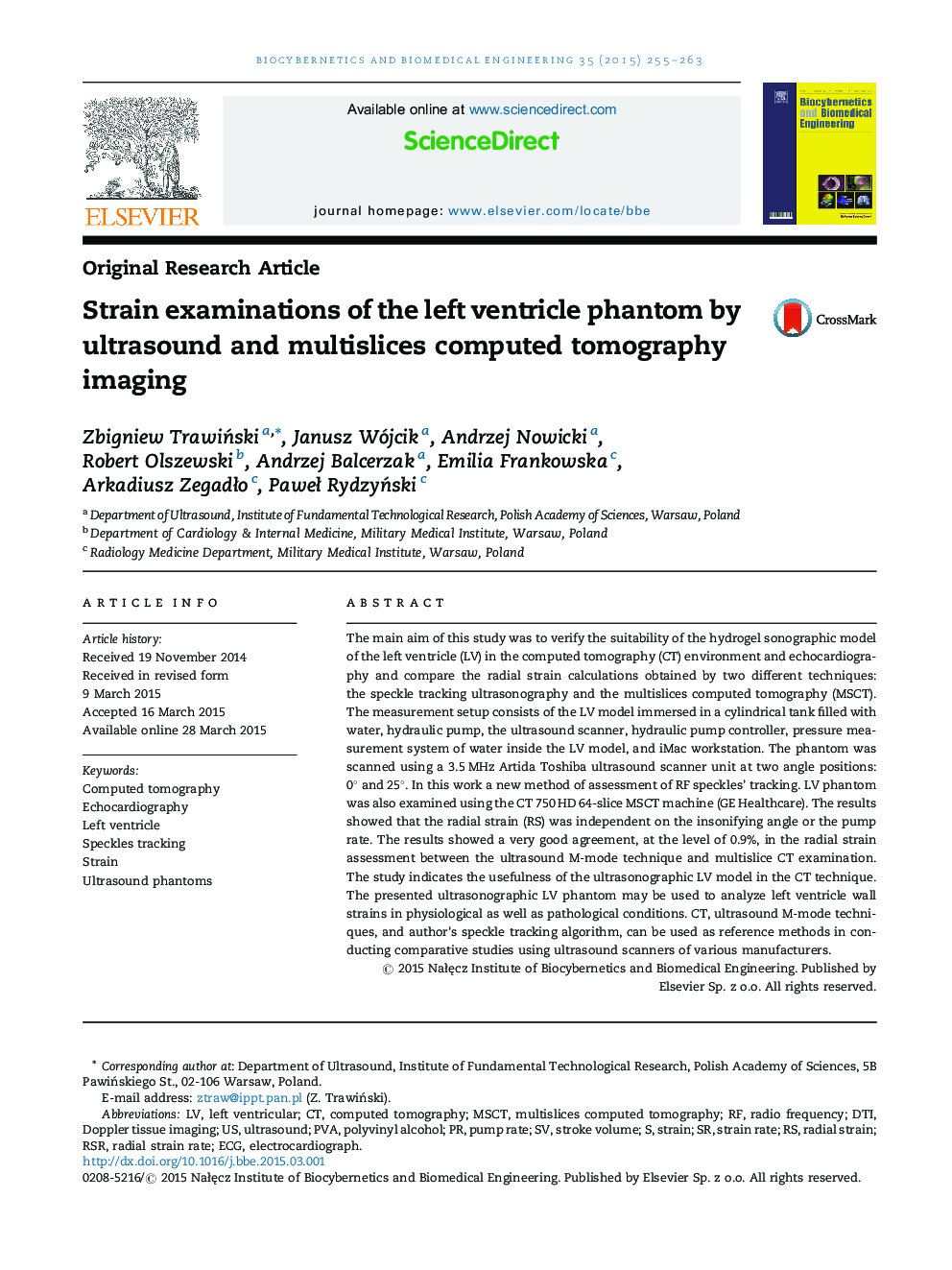| Article ID | Journal | Published Year | Pages | File Type |
|---|---|---|---|---|
| 5181 | Biocybernetics and Biomedical Engineering | 2015 | 9 Pages |
The main aim of this study was to verify the suitability of the hydrogel sonographic model of the left ventricle (LV) in the computed tomography (CT) environment and echocardiography and compare the radial strain calculations obtained by two different techniques: the speckle tracking ultrasonography and the multislices computed tomography (MSCT). The measurement setup consists of the LV model immersed in a cylindrical tank filled with water, hydraulic pump, the ultrasound scanner, hydraulic pump controller, pressure measurement system of water inside the LV model, and iMac workstation. The phantom was scanned using a 3.5 MHz Artida Toshiba ultrasound scanner unit at two angle positions: 0° and 25°. In this work a new method of assessment of RF speckles’ tracking. LV phantom was also examined using the CT 750 HD 64-slice MSCT machine (GE Healthcare). The results showed that the radial strain (RS) was independent on the insonifying angle or the pump rate. The results showed a very good agreement, at the level of 0.9%, in the radial strain assessment between the ultrasound M-mode technique and multislice CT examination. The study indicates the usefulness of the ultrasonographic LV model in the CT technique. The presented ultrasonographic LV phantom may be used to analyze left ventricle wall strains in physiological as well as pathological conditions. CT, ultrasound M-mode techniques, and author's speckle tracking algorithm, can be used as reference methods in conducting comparative studies using ultrasound scanners of various manufacturers.
